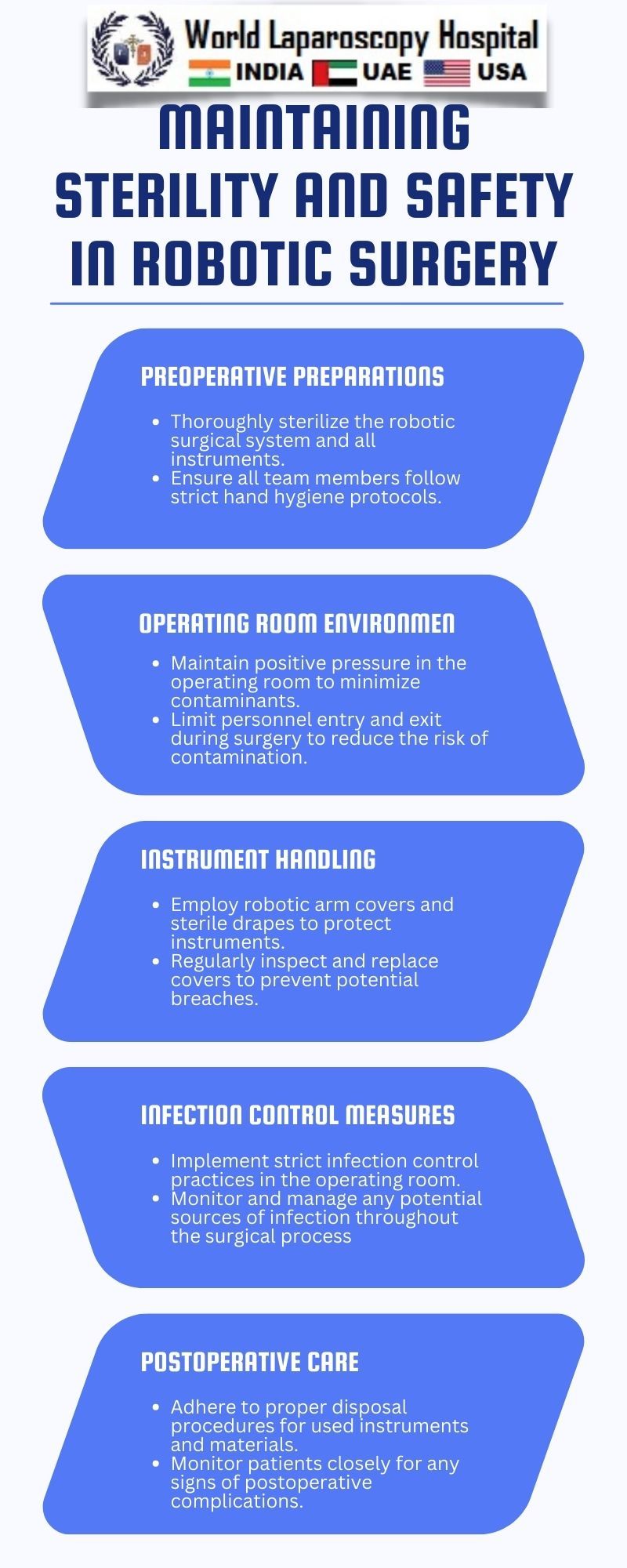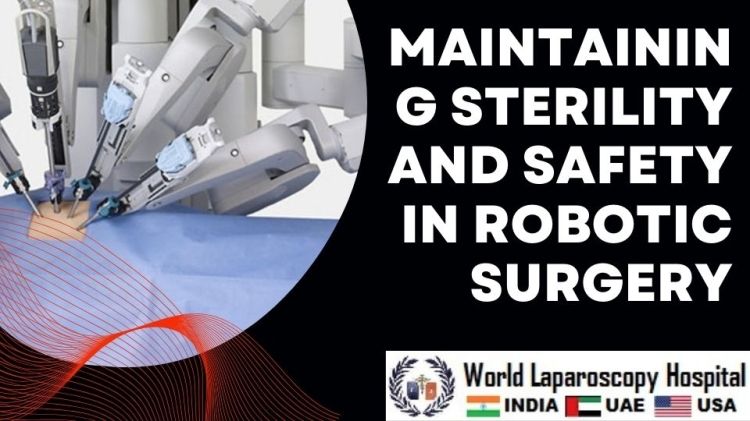Maintaining Sterility and Safety in Robotic Surgery
Introduction
In the realm of modern medicine, robotic surgery has emerged as a revolutionary approach, offering enhanced precision, minimally invasive procedures, and faster recovery times. As the utilization of robotic systems becomes more commonplace in operating rooms, the imperative to maintain sterility and ensure safety during these intricate procedures is paramount. This article delves into the intricacies of maintaining sterility and safety in robotic surgery, exploring the rigorous protocols, advanced technologies, and training methodologies that contribute to the success and well-being of both patients and surgical teams.

The Evolution of Robotic Surgery
To comprehend the significance of maintaining sterility and safety in robotic surgery, it is essential to trace the evolution of this cutting-edge technology. Robotic surgery first made its mark in the early 2000s, with the da Vinci Surgical System gaining prominence for its ability to translate a surgeon's hand movements into precise robotic actions. Over the years, robotic platforms have evolved, becoming integral tools in various surgical specialties, including urology, gynecology, and general surgery.
The Importance of Sterility in Robotic Surgery
Aseptic Techniques and Surgical Site Infections
Maintaining a sterile environment is foundational to the success of any surgical procedure, and robotic surgery is no exception. The risk of surgical site infections (SSIs) poses a significant concern, emphasizing the need for stringent aseptic techniques. The meticulous adherence to protocols for hand hygiene, sterile draping, and proper gowning minimizes the risk of introducing pathogens into the surgical field.
Sterilization of Robotic Instruments
Robotic surgical systems consist of intricate instruments and robotic arms that must be meticulously sterilized to prevent infections. Ethylene oxide gas, autoclaving, and hydrogen peroxide plasma are among the sterilization methods employed to ensure that each instrument is free from microorganisms. Regular equipment checks and adherence to manufacturer guidelines are essential components of maintaining the sterility of robotic instruments.
Advanced Technologies Enhancing Sterility
Single-Use Instruments
In the pursuit of enhanced sterility, the adoption of single-use robotic instruments has gained traction. Disposable instruments, designed for a single procedure, eliminate the risk of cross-contamination and reduce the complexity of sterilization processes. Though cost considerations come into play, the benefits in terms of sterility and safety are often deemed invaluable.
Sterile Drapes and Barriers
Robotic surgical systems are encased in sterile drapes and barriers to create a controlled environment. These barriers prevent airborne contaminants and maintain the sterility of the robotic arms and instruments. Advances in materials and design have led to the development of highly effective sterile barriers, further fortifying the integrity of the surgical field.
Training and Education for Surgical Teams
Simulation and Virtual Reality
Ensuring the safety of robotic surgery extends beyond the sterility of instruments and the surgical environment. Training and education play a pivotal role in equipping surgical teams with the skills necessary to operate robotic systems adeptly. Simulation and virtual reality technologies provide a risk-free environment for surgeons and support staff to practice procedures, refine techniques, and navigate potential challenges before entering the operating room.
Certifications and Continuous Learning
Robotic surgery demands specialized skills, and certification programs have emerged to standardize training and ensure competency among surgical teams. Continuous learning and skill maintenance are emphasized, encouraging surgeons and support staff to stay abreast of technological advancements and refine their proficiency in utilizing robotic platforms safely.
Real-Time Monitoring and Feedback
Intraoperative Imaging
Real-time monitoring during robotic surgery is crucial for identifying potential issues and ensuring the accuracy of procedures. Intraoperative imaging, such as fluoroscopy and 3D imaging, allows surgeons to visualize the surgical site with precision, aiding in decision-making and enhancing safety.
Haptic Feedback Systems
Haptic feedback systems provide surgeons with a sense of touch during robotic procedures, translating the tactile information from the surgical field to the console. This technology enhances the surgeon's ability to navigate delicate tissues and manipulate instruments with precision, contributing to the overall safety and success of the surgery.
Challenges and Future Perspectives
Ergonomics and Operator Fatigue
While robotic surgery offers numerous advantages, concerns regarding ergonomics and operator fatigue persist. Prolonged hours at the console can lead to physical strain and fatigue among surgeons. Future advancements in ergonomic designs and human-robot interfaces aim to address these challenges, prioritizing the well-being of surgical teams.
Integration of Artificial Intelligence
The integration of artificial intelligence (AI) in robotic surgery holds promise for further enhancing safety. AI algorithms can analyze vast amounts of data in real-time, providing insights into potential complications and assisting surgeons in decision-making. As AI continues to evolve, its role in augmenting the safety of robotic surgery is likely to expand.
Conclusion
Maintaining sterility and ensuring safety in robotic surgery are critical components of harnessing the full potential of this transformative technology. From stringent aseptic techniques to the integration of advanced technologies and continuous training, a multifaceted approach is essential. As robotic surgery continues to evolve, the commitment to fostering a secure and sterile environment will pave the way for further innovations, ensuring the well-being of patients and the success of surgical teams in this dynamic field.


